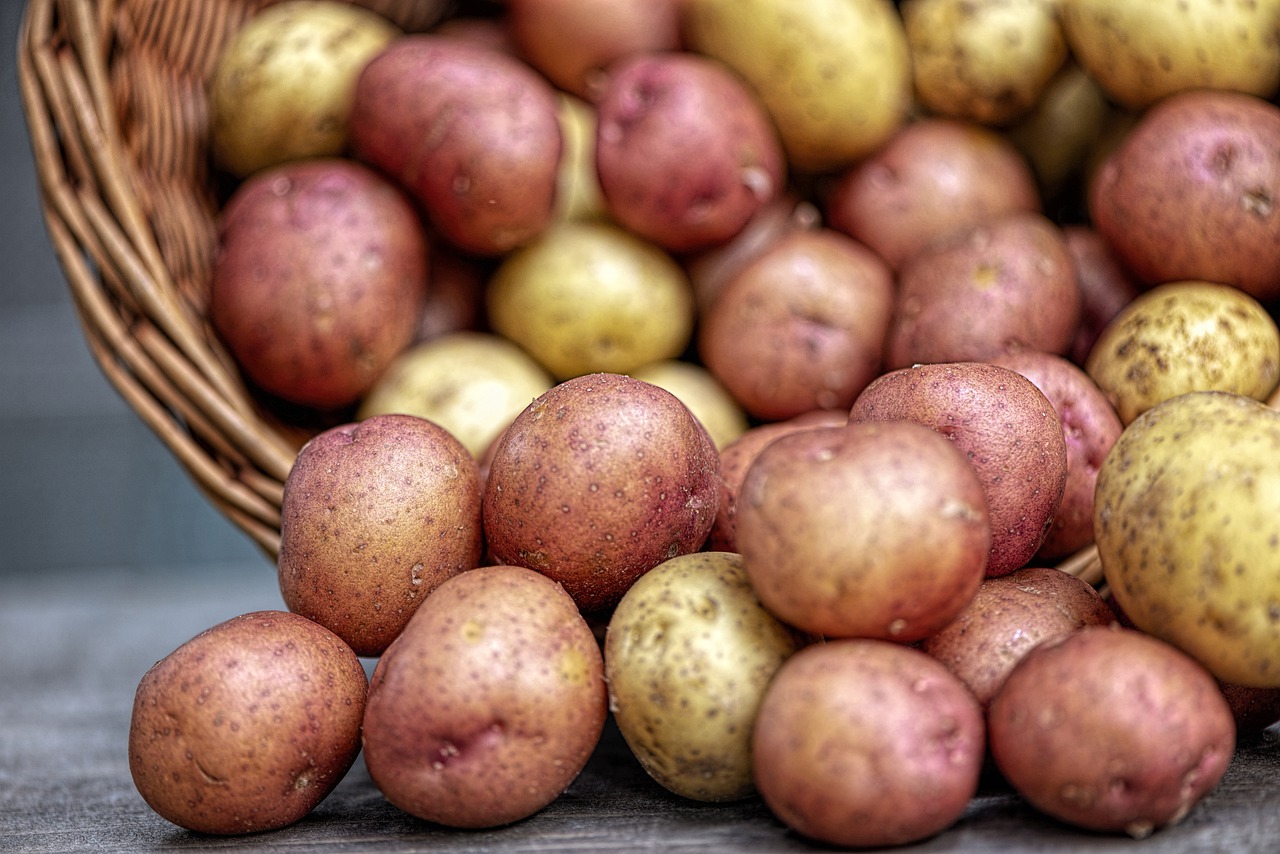
Solanum tuberosum L., also known as potatoes, are one of the most consumed vegetable crops in the world. Because of their nutritional value, potatoes’ quality and safety are very important. There is a potential danger for potato consumers due to some toxic compounds called glycoalkaloids (TGA – total glycoalkaloids), which accumulate in potatoes during growth, harvesting, and storage. They naturally function as stress metabolites and help in protecting potatoes against insect attacks, phytopathogens, and fungi. The presence of glycoalkaloids in potato tubers, leaves, and stems is involved with plant resistance to fungal and bacterial diseases, as well as pests.
The highest concentration of glycoalkaloids is present in the unripe fruit, sprouts, flowers, and under potato tubers’ skin. These steroidal alkaloids are distributed throughout the whole potato plant. It is stated that a safe glycoalkaloid concentration level in fresh potato tubers is not higher than 200 mg/kg of fresh matter. When the accumulation exceeds 200 mg/kg of fresh matter, glycoalkaloids are dangerous for human health. TGA intoxication can cause digestive problems, diarrhea, and vomiting, although higher doses might cause nerve system damage, coma, and even death.
Potatoes are quite different genetically in their ability to produce glycoalkaloids. It is advisable to find and use potato varieties that have lower glycoalkaloid accumulation tendencies.
There is little available literature on the effect of plant protection chemicals and biostimulants on the accumulation of glycoalkaloids in potato tubers and leaves. Hence, the objective of this study was to determine glycoalkaloid content in the tubers and leaves of potatoes cultivated using herbicides and biostimulants.
Let’s explain what plant biostimulants are. In addition to pesticides, modern agriculture also makes use of a number of substances called biostimulants, which stimulate life processes and enhance plant resistance to stress conditions. Plant biostimulants consist of diverse substances and microorganisms which are friendly for the environment and consumer health.
In my experiment, TGA levels did not exceed 200 mg/kg of the fresh weight of tubers. The three examined potato varieties are thus safe for human consumption. The glycoalkaloid content of potato tubers ranged from 90,38 to 93,76 mg/kg of fresh potato tubers, and the concentration of glycoalkaloids in leaves ranged from 276,80 to 279,60 mg/kg. So, the glycoalkaloid content in potato leaves was three times higher compared to potato tubers.
Summarizing, three varieties of edible potatoes grown in the study differed in terms of glycoalkaloid content in leaves and tubers. The glycoalkaloid level in potato leaves and tubers was significantly affected by the cultivar, herbicides, and biostimulants used. The significant glycoalkaloid concentration can also be affected by weather conditions during the growing season and cultivation methods applied.
The herbicides applied alone contributed to an increase in glycoalkaloids in both potato tubers and leaves. And when herbicides were used in combination with bioregulators, the amount of TGA slightly declined.
The glycoalkaloid content of potato leaves was slightly lower in units where combinations of herbicides and biostimulants were applied compared with herbicide-treated units.
In conclusion, potato variety selection is very important to avoid toxic levels of glycoalkaloids. Improper post-harvest handling conditions are the main cause of toxic levels of these chemical compounds in potatoes. To keep glycoalkaloid content low, store potatoes at lower temperatures, keep potatoes away from light, and market potatoes in opaque plastic films or paper bags.









